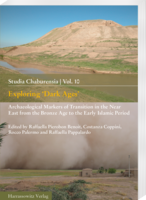|
|
more titles of the subject:
This book is the result of a workshop organized by the editors on April 5, 2018, during the 11th International Congress on the Archaeology of the Ancient Near East (ICAANE) in Munich, Germany.
The workshop’s goal was to discuss the archaeological traces, or lack thereof, of the so-called transitional periods in the long history of Northern Mesopotamia, from the Bronze Age to the Islamic period. What emerges from the contributions, which differ in terms of chronology, spatial extent, and research subject – from single sites to long term investigation, from material culture to historical approaches –, goes beyond the traditional approach to the Dark Ages, emphasizing phenomena of resilience and evolution, rather than drastic and abrupt changes. From the expansion and contraction of settlement patterns to the spatial redefinition of urban spaces and the persistence of certain ceramic horizons through time, the authors put back the material evidence on the agenda of the archaeological research on the Dark Ages. The book offers a unique view, although from different angles, of some of the in-between periods of Mesopotamian history: The Middle-Late Bronze transition, the so-called post-Assyrian period, the evolution of late antiquity material culture into the Islamic period. Thus, the authors aim at redefining the concept of transition in the light of new or revised data from fundamental projects in Syria, Iraq, and Iraqi Kurdistan. |






